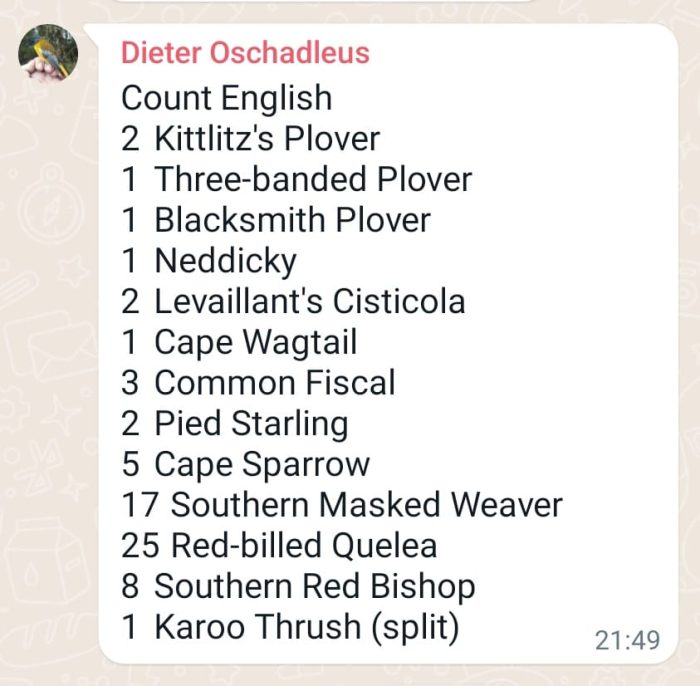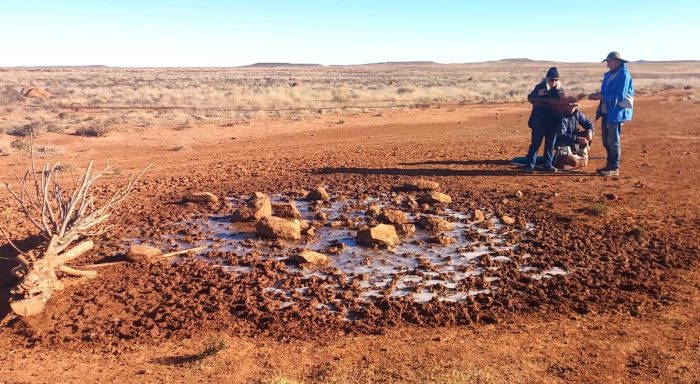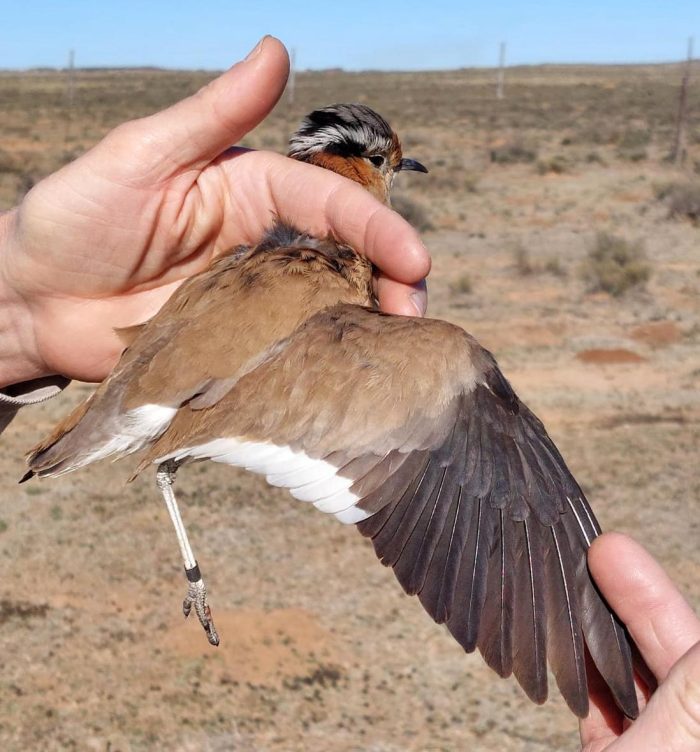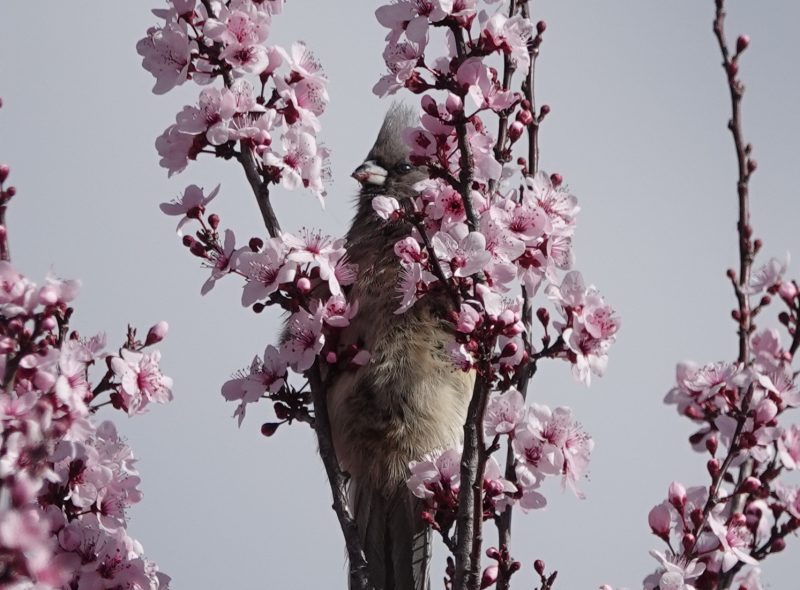We have done five days of bird ringing at New Holme Lodge, 8 km off the N1 between Hanover and Colesberg in the Northern Cape, and exactly half way between Cape Town and Johannesburg. Three days to go! That will be in Part 2!
It is clearly spring. The fruit trees around the lodge are in blossom. But spring in the Karoo represents the end of the long dry winter. The countryside looks drought stricken, awaiting the arrival of the summer thunderstorms. But summer rainfall is at risk this year, because of the intensity of the El Niño which appears to be building up this year. This climate systems impacts rainfall over the summer rainfall region of South Africa, including this part of the Karoo. Read this Daily Maverick article.
Day 1 : Saturday 2 September. We operated around the Karoo Research Station end of the werf. Dieter summarized the day’s bird ringing results:

Red-billed Queleas and Southern Masked Weavers made up the bulk of the day’s catch of 69 birds of 13 species. There were several retraps, some from the first ringing undertaken here in 2019. The Kittlitz’s Plovers, the Three-banded Plover and the Blacksmith Lapwing were mistnetted at the edge of the New Holme Dam at dusk:


The Blacksmith Lapwing was not showing any primary moult. The outermost primary is starting to look a bit frayed at the end, and worn. Birds replace their feathers on an annual basis (mostly). Moult is one of the neglected areas in the study of birds, and something that we focus on strongly in all our ringing events, including the ringing courses.
Day 2 : Sunday 3 September. We headed out to a waterhole on New Holme, some 3 km from the werf.
The waterhole is fed by water piped from a nearby wind pump. It does not look particularly impressive. Look closely at at the bare ground just beyond the water. It has a scattering of Grey-backed Sparrow-larks coming to drink:

The totals for the morning tell a story of low diversity, with a solid focus on just one species, the Grey-backed Sparrow-larks

This Lark-like Bunting was especially interesting …

September is the least likely time to find birds of any species in moult in this area. Most species in the summer rainfall area breed once the rains get started, usually October-November. They moult after breeding, in autumn and maybe early winter. Most species avoid moulting in winter, when it is cold and dry, and food resources are minimal. So it was a surprise to find this Lark-like Bunting actively moulting. Working from the outside of the wing, there are three old feathers. They are old because they have faded and the feather tips are worn. Then there is an actively growing primary, about half grown. Working inwards, there are six recently grown primaries, a darker shade of brown, and intact feather tips. Primary moult works from the inside outwards. The next feather to be dropped is the third primary from the end.
Day 3: Monday 4 September We ringed in the gardens on the lodge end of the werf. We caught this Bokmakierie:

One of the privileges of being a bird ringer is the opportunity to see birds up close. The opportunity to see the detail of the feathers, the colour of the eye, and the complex patterns in it, and the opportunity to grasp the reality that you don’t want to be an insect when that weapon is on the hunt for food!
Day 4: Tuesday 5 September We operated back at the Karoo Research Centre end of the werf. Highlight of the day was a Pale Chanting Goshawk:

You don’t want to be the mouse or reptile that encounters those claws!

That is an even scarier weapon than the Bokmakierie’s. And that bill maybe has a shade for the lipstick houses to imitate.

The detailed patterning on the wing is impressive from close up. Those are the secondary feathers of the wing, at the bottom on the photo. The moult of the primaries of large birds (this goshawk weighed 910 g) is quite different to that of small birds. Most birds up to about 250 g moult all their primaries annually, working through the primaries in sequence. For larger birds, it is biologically impossible to replace all their primaries each year. The primaries on the wing of this Pale Chanting Goshawk are a mishmash of old tattered feathers, new feathers and with the fourth primary from the end of the wing growing.
Day 5 Wednesday 6 September. After breakfast we headed back to the distant waterhole. We’d given the Grey-backed Sparrow-larks a three-day break. We knew it was a cold morning, but when we got there, we grasped how cold:

Just as well we had breakfast before heading out! The birds couldn’t come and drink until the ice melted.
The bird of the day was …

… Burchell’s Courser! According to SAFRING records, this is only the 37th Burchell’s Courser to be ringed in southern Africa since bird ringing started here in 1948, 75 years ago.
Here is the blog about the the second half of the course, Part 2. Links to the descriptions of previous BDI ringing courses and expeditions are summarized in this blog. To join a future ringing event, see Events!

